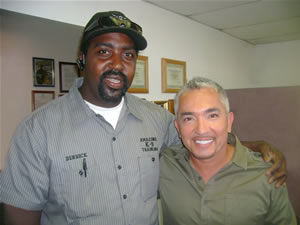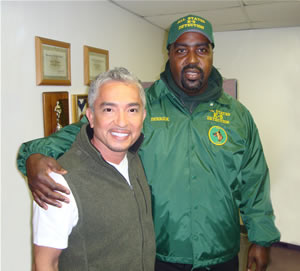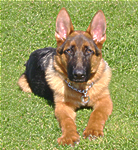DOG TRAINING HELP
AMAZING K-9 OBEDIENCE TERMINOLOGY
Learn dog training techniques that work in real life!
NO
The command no must be taught as a basis for all training. Whenever this command is given, it means for the dog to stop doing whatever he is doing. A leash and choke chain should be on the dog when the command is given and a sharp, quick jerk should be given at the same time as the NO. Do not reach for the dog. Always reach for the leash.
HEEL POSITION
The dog’s shoulder should remain no more than 6” away and no closer than 4”parallel to the side of your hip.
HEEL COMMAND
Meaning to walk off starting with the left foot first – at the same time, giving the dog a gentle bump on the shoulder with the left foot – at the same time giving a gentle jerk & release on the choke chain while giving the command to HEEL.
SIT
The dog should be sitting with rear legs placed directly under him and facing the same way as the owner. (Do not let the dog move.) Lift up the lead and push down on the dog’s rear end. Say “sit’. To perform a sit from a down position, start off with your right palm facing the dog at ground level. Then bring your hand in front of the dog’s face to the leash above his head and lift the dog quickly into a sit position, with a command to SIT.
STAY
To remain stationary. The hand command for stay is to bring your left hand around behind the dog’s head, and then in front of the dog’s nose. At the same time, give the command to STAY. The dog should remain in the position he was in at all times. If the dog should move, he should be placed back EXACTLY in the same position he was in.
DOWN
Down is the heel position – to lay down with all four legs facing forward under the dog’s body and head. The hand command is to take your right hand from your left cheek down in front of the dog’s nose grabbing the lead and jerking down and forward toward the ground. Say “Down, stay”, and give verbal and physical praise when the dog minds.
COME
Come with dog in sit-stay or down-stay position: Place the lead in your left hand and with the right hand extended; palm facing the dog horizontal to the ground, bend at the elbow, bringing your hand to your chest. At the same time tell the dog to COME, giving a jerk towards you on the lead and pulling the dog toward you. This should end with the dog sitting in front of you, facing you.
RECALL
With the dog sitting in front of your and facing you, give your dog the HEEL command. (1) At the same time, rock back on your right foot, swing him around to your right side, behind you, and then to your left side. The dog should be sitting next to you, facing forward in the HEEL position OR (2) At the same time, rock back with your left foot, pull him back and away from you, swinging him into the HEEL position.
Housebreaking Instructions
Housebreaking a dog or puppy is a simple process. There are several different methods. However, tremendous success can be had with the following method, which I recommend.
One of the best and fastest ways is to buy a Vari Kennel or Wire Crate to fit the size of your pet.
The Crate or Kennel has many uses during the course of your pet’s life such as sickness, traveling, and whelping and most animals grow to love their little get-a-way.
The feeding and watering of the animal is based on the owner’s schedule and personal circumstances.
Here are some basic steps that should be followed:
- The first rule should be to remove the animal from the crate of Kennel to the area where the pet is expected to relieve itself. Then return the animal to the Crate and offer food and water for approximately 20 minutes. Remove the food and water. Take the animal out again after feeding and watering. NOTE: If your dog is a puppy, he should be taken out to relieve himself each time he wakes up from a nap, whether it is at night or during the day.
REMEMBER: Puppies are like small babies. When they are woken up, they will have to relieve themselves and should be taken to the area where they are expected to go. The same applies at feeding time. When fed, they will have to relieve themselves. A puppy will not understand that he is to relieve himself in the potty area so you may have to wait. You can also place a tie out to keep him there while you go do other things. Be sure to return often and if he has relieved himself, praise him.
- Keep the animal in the kennel or Crate whenever you can’t watch him. If he is outside the crate when you are present, he should be on a leash so you can maintain control of his actions. At first, you must carry your puppy to and from the potty area for at least 2 days. If your puppy or dog is too big to carry, you should lead him with a leash to the potty area.
(NOTE: Your dog should become used to a leash by allowing him to drag it around with him only when you are there.) You may then take him on a leash for the next 4-5 days. After that, you should be able to walk the puppy to the area without a leash.
- Do not feed water or food to them except for at feeing time. Do not feed them water late at night.
- Complete this process 3-4 times daily.
- Take the animal out right before your go to sleep, always.
- Complete this process 3-4 times daily.
- Take the animal out right before your go to sleep, always.
Crate Training
Serves as dog’s den, or safe place. Because it’s her sleeping spot, she won’t want to soil it by pottying there. It’s important because it teaches the dog to want to control her bladder and bowels.
Stick to a Schedule
- Take your dog out at regular intervals:
- Go out first thing in the morning
- Immediately after every meal
- After playtime
- Immediately after waking up from a nap
- Just before bedtime
(Excitement and stress are potty triggers, so in some instances you may need to take the dog out more frequently)
Important – Separate playtime and potty time from your dog’s mind:
Take her out to do one or the other, not both at the same time. She needs to learn to get down to business right away when it’s potty time. One way to facilitate that is with praise:
As soon as she starts to pee or poop, verbally praise her! When she’s finished, praise her even more verbally and with pets and ‘good girl’.
Feeding meals on a regular schedule will also help your dog regulate the need to eliminate. We recommend giving meals at specific times of day rather than leaving food out all the time. Take up her food & water, if left over, before her last time out for the evening, before bedtime.
Limited Responsibility
Too much freedom leads to accidents, and once they’re in the habit of eliminating in the house, it’s more difficult to teach your dog that she needs to go outside – all the time – not inside. Start by giving her freedom in the kitchen or bathroom or laundry room, for example. Anywhere else, she should be attached to you by a leash so you always know where she is and what she’s doing. As she gains in reliability, you can gradually extend the amount of freedom she has in the house (the good news is, the older they get, the less frequently they have to go to the bathroom).
Communicate
Watch your dog closely to see what she does prior to peeing or pooping.
Some dogs have very obvious body language, sniffing and circling. The instant you see this, take her out. Other dogs may paw at you – don’t brush them off, thinking they want attention. Take them out. Some dogs sit in front of the door and bark; others just sit in front of the door.
Open-Door Policy
Installing a dog door and teaching your dog how to use it will also aid in housetraining. Once she knows that outside is the place to go – all the time – and that she can use the dog door to get there, she’ll be able to go out on her own whenever she needs to.
Use the same techniques of positive reinforcement regarding the dog door as you do for pottying outside. (Every time she goes out through the dog door, act like it’s the smartest thing she’s ever done!)
Accidents Happen
No matter how careful you are, accidents can happen, but preclude them by giving your dog lots of praise when she potties outdoors. That’s the only way your dog will know that you like what she did. Of course, you need to go outside with her so that you’re there to praise her when she performs – no sending her out in the yard assuming she peed and pooped. Those are the times she comes back in and potties in the house because she spent all her time outdoors sniffing or playing.
If you catch your dog in the act of pottying in the house, create a diversion by clapping your hands or make a loud guttural sound (“Aaaaght!”), then immediately take her outdoors to finish.







 View Our K9 Training Video Demonstration!!!!
View Our K9 Training Video Demonstration!!!!













